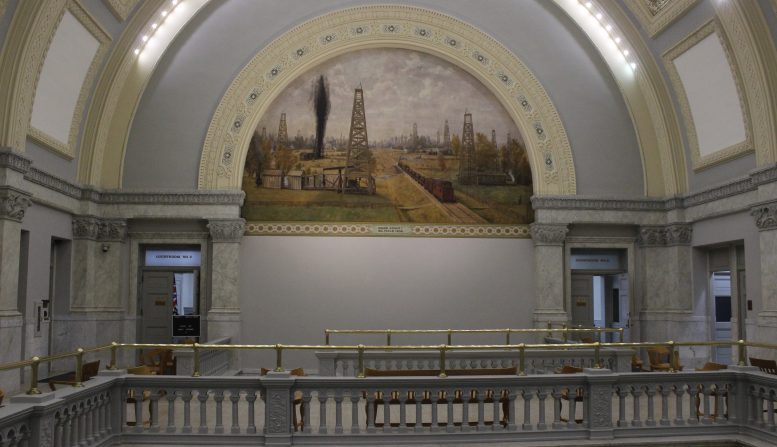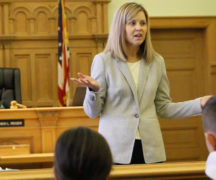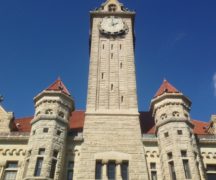By DAVID DUPONT
BG Independent News
Murals depicting the history of Wood County, and now part of that history, need some work.
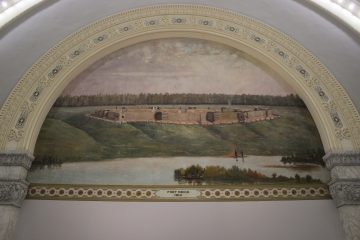
Mural depicting Fort Meigs
The murals on the third floor of the Wood County Courthouse depict, on the east wall, Fort Meigs in 1813 and facing it on the west wall, one depicting an oil field in 1904. The murals were painted * by I.M. Taylor, an artist who was also mayor of Bowling Green.
Nick Foos, facilities director for the county, said that in the past 18 months as work was being done restoring plaster in the second and third floors of the courthouse, workers noticed some paint flaking on the murals.
That information was shared with county officials, including County Administrator Andrew Kalmar. “We collectively decided we should do something about it before it gets worse,” Foos said.
So the county contracted with ICA Art Conservation, a non-profit center in Cleveland for advice. On Tuesday, Andrea Chevalier, a senior painting conservator, visited the courthouse, and using step ladders was able to get a closer look at the situation.
What she saw was not pretty, but reparable.
There are large areas of areas where the paint is peeling, yet still precariously hanging onto the surface. There are also a few areas where the paint is gone altogether.
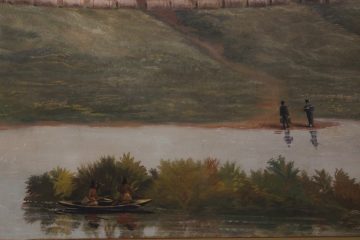
detail from Fort Meigs mural
Foos said the mural depicting Fort Meigs is in worse shape than the one depicting Wood County oil fields.
The surfaces of the paintings are actually quite clean, without a film of dirt, nor heavy varnish.
Foos said there were traces of nicotine from the time when smoking was allowed in the building.
Chevalier said that to fix the murals an adhesive will have to be applied under the surface using a hypodermic needle or brush. Then a special packing press will be used to flatten the flaking paint back onto the surface.
The areas where the paint is gone will be filled in and repainted to match the original.
Chevalier could not give an estimate on what that will cost. She’s working on a report based on her observations on the site. She expects to have a report to Kalmar by the end of next week.
Still “it’s not inexpensive.” Just getting the scaffolding up from the second landing will be costly.
Chevalier was only able to touch about the bottom three feet of the murals, which she estimates are 24-by-24-feet.
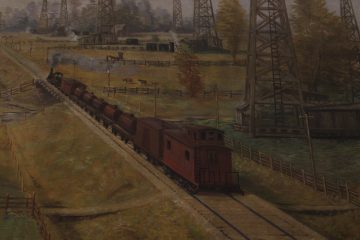
Detail from oil field mural
While not by a famous artist, they are competently painted. she said, and definitely worth preserving. “They’re part of the cultural heritage of the city and the county.”
Public buildings from the late 19th and early 20th century were “very decorated,” Chevalier said. People then valued the decorative arts – stone work, sculpting, metalsmithing, glasswork, and murals.
People wanted their public buildings to showcase that skill. “They were public buildings,” she said. “They wanted those to reflect the quality of craftsmanship they had. I think we’d be hard pressed to find those people today.”
*The story originally stated the murals were painted in 1910-11, but those dates have been called into question.

